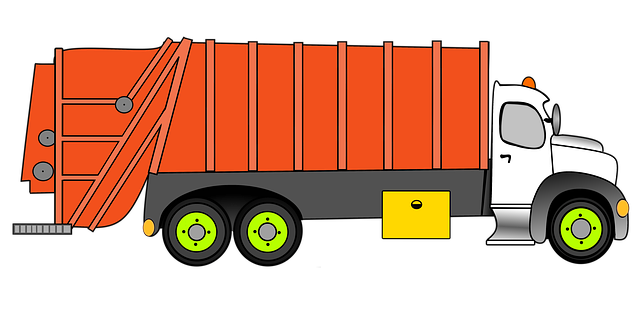Looking to register your car in California? This comprehensive guide walks you through the entire process, ensuring a smooth experience. From understanding crucial registration requirements to gathering essential documents and navigating the steps of a VIN (Vehicle Identification Number) verification—a key step for accuracy—you’ll learn what’s needed. We’ll also explore different registration types and help you submit your application with ease.
- Understand California Car Registration Requirements
- Gather Necessary Documents for Vehicle Registration
- Perform VIN Verification: Steps and Importance
- Choose an Appropriate Registration Type in California
- Submit Application and Pay Fees for Car Registration
Understand California Car Registration Requirements

Before registering your car in California, it’s crucial to understand the state’s specific requirements. One key step is ensuring accurate and up-to-date vehicle information, including a valid Vehicle Identification Number (VIN) verification. This process confirms the authenticity of your car’s details, which are essential for issuing a registration certificate.
In California, you’ll need to undergo a VIN inspection to meet these requirements. A mobile vin inspector or a designated vin verifier can assist with this by checking the vehicle’s history, identifying any discrepancies, and ensuring it complies with state regulations. This step is vital to avoid delays in the registration process and to guarantee a seamless transition for your newly acquired vehicle within California’s legal framework.
Gather Necessary Documents for Vehicle Registration

Before you begin the registration process, make sure you have all the required documents. One crucial piece is the Vehicle Identification Number (VIN) verification. This step involves obtaining a valid and accurate VIN from your vehicle, which serves as a unique identifier. Many California residents prefer to use a mobile vin verifier for this purpose, allowing them to complete a quick and convenient VIN inspection right from their smartphone or tablet.
Having the necessary paperwork ready ensures a smoother registration experience. Some essential documents include proof of ownership, such as a title or bill of sale, current vehicle registration (if applicable), valid insurance papers, and a valid driver’s license. Additionally, you might need to provide identification proving your residency in California, like a state-issued ID card or utility bill.
Perform VIN Verification: Steps and Importance

Performing a Vehicle Identification Number (VIN) verification is a crucial step in the car registration process in California. This involves checking the vehicle’s unique VIN to ensure its authenticity and history, which can be done through various methods including using an online VIN verifier or even a mobile vin inspection service. By verifying the VIN, you can confirm if the car has been reported stolen, if it has had any previous accidents or significant damage, and if all maintenance records are up-to-date—all of which are essential factors in determining the vehicle’s safety and legal status.
A mobile vin verifier, for instance, allows you to complete this task conveniently by providing on-site VIN verification services. This is particularly beneficial when dealing with older vehicles or those with complex histories, as it offers a fast and accurate way to cross-reference the provided information against official databases. Ensuring that your car’s VIN is verified not only aids in a smooth registration process but also plays a vital role in maintaining road safety and preventing fraudulent activities.
Choose an Appropriate Registration Type in California

When registering your car in California, the first step is to understand the different registration types available. The state offers various options depending on your vehicle’s age and intended use. For instance, private passenger vehicles typically require a standard registration, while commercial or specialized vehicles may need specific licenses. One crucial aspect to consider is whether you need a vin inspection or vin verification. This process, often conducted by a mobile vin verifier, ensures the vehicle’s authenticity and plays a vital role in preventing fraud.
The California Department of Motor Vehicles (DMV) provides guidelines to help owners select the right registration type. As your vehicle ages, it might transition from one category to another, impacting fees and requirements. A vin inspection is particularly important for older vehicles or those with modified titles, ensuring compliance with state regulations. Properly identifying your vehicle’s registration needs is essential, especially when dealing with unique scenarios that require specialized attention, such as a mobile vin inspection.
Submit Application and Pay Fees for Car Registration

After gathering all the necessary documents and ensuring your vehicle meets California’s requirements, it’s time to submit your application for car registration. This process involves filling out a form with detailed information about your vehicle, including its make, model, year, and unique Vehicle Identification Number (VIN). Along with the application, you’ll need to pay the required fees, which vary based on your vehicle’s type and age. California offers several payment methods, ensuring convenience for registrants.
One crucial step before submitting is conducting a VIN verification or inspection. This process ensures that your vehicle matches the details provided in the documents. You can opt for traditional VIN inspection at a designated center or leverage mobile vin verification services, providing added flexibility and potentially saving you time.
Registering a car in California involves understanding specific requirements, gathering essential documents, and completing crucial steps like VIN verification. By adhering to these guidelines and choosing the right registration type, you can ensure your vehicle is legally compliant. Remember, proper registration not only protects you as a driver but also contributes to safer roads for all Californians. So, take the time to follow these steps and avoid any potential headaches down the road—literally!
